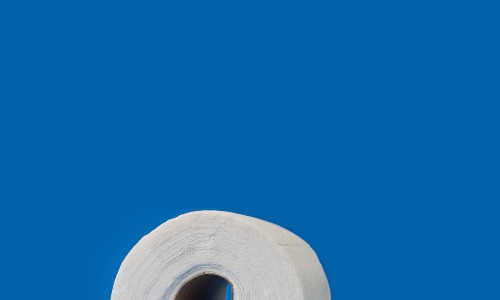
For years, fans and cooling systems have been a key component of the motor sport industry and in particular for auto racing. The industry relies heavily on high quality fans and unique cooling systems that are custom made to match the exact requirement of every single operator and then specially produced in large quantity to offer bespoke performance and unparalleled reliability at low cost. However fans and cooling systems are much more complex than meets the eye; they require careful testing and a thorough review before any purchase is made. Failure to follow these simple steps will result in a fan that is either too weak to work properly, or if not working, could lead to the fan causing damage to expensive machinery, or worse, to the life of the operator itself! This in turn can prove to be disastrous to the reputation of the manufacturer, and could mean that they will be no more popular than other brands that have not been tested properly. This article looks at how manufacturers test their fans, how these tests compare to those carried out by non-manufacturers, and why it is essential for consumers to do the same when making a decision regarding a cooling or fan system.
The most widely used fan and cooling systems are the hot and cold air conditioning systems that are installed directly onto the premises of use. These air conditioning systems are often highly sophisticated units using state-of-the-art technology, but nevertheless, they are widely used as a primary cooling system due to their simple installation, relative low cost and reliable operation. The main fan used is called a blower and is usually located on the roof of the building or within easy access from the ground. A secondary fan may be included in the design but is not as widely used. Blowers are tested using set criteria to establish their effectiveness in keeping temperatures down in the summer months and also to confirm whether they achieve this effectively without increasing the noise output. These standards are specified by the American Society of Mechanical Engineers (ASME).
Cooling fans are another widely used type of cooling equipment that use fans to draw in external air through the ventilation openings. It is important that these cooling fans are set at a high enough speed to ensure effective cooling of the room or areas they are placed in. Generally speaking, coolers and fans which use high-powered motors are likely to generate more noise than lower-powered fans.
Computer fans and CPU coolers are yet another common example of cooling equipment which have experienced increased popularity in recent years. The increase in demand for computer systems which are capable of reducing heat output and temperature have led to an increased range of designs which meet these requirements. Fan systems using one or more axial-flow fans are now commonplace in many compact form-factor systems, while under-floor heating utilises central heating ducts to distribute heated air into the room. Integrated CPU and graphics card coolers are also becoming increasingly popular in the home and work arena.
Air flow meter fans are another way of providing cooling to your computers. They measure the amount of airflow into a room and can often be connected to a central cooling system for additional power generation and temperature monitoring. These meter based fans come in a wide range of different sizes and configurations. They can often be powered by a USB port or alternatively they can function on a battery charge if required.
If your system uses a fan to push its temperature down, you may need to upgrade to a liquid cooling system if your fan is not powerful enough. A liquid cooling system uses a pump to move heat away from the computer via a liquid medium such as water or Freon. The liquid coolers utilise a phase change mechanism to stop the expansion of the refrigerant gases once they reach a predetermined temperature and are capable of operating at temperatures of up to temperatures of 1000 degrees Fahrenheit. These are very effective alternatives to traditional air-conditioners because the fans cannot contribute to the evaporation of condensation on the surfaces of your computer case.
-
 Ljuutx 2″ Tri Electrical Heater Heating Ingredient All 304SS 3KW/4.5KW/6KW/9KW/12KW 220V380V Spare Elements Match for Homebrew with Clamp$72.76
Ljuutx 2″ Tri Electrical Heater Heating Ingredient All 304SS 3KW/4.5KW/6KW/9KW/12KW 220V380V Spare Elements Match for Homebrew with Clamp$72.76 -
 Ljuutx 2″ Tri Electrical Heater Heating Factor All 304SS 3KW/4.5KW/6KW/9KW/12KW 220V380V Spare Components Match for Homebrew with Clamp$65.22
Ljuutx 2″ Tri Electrical Heater Heating Factor All 304SS 3KW/4.5KW/6KW/9KW/12KW 220V380V Spare Components Match for Homebrew with Clamp$65.22 -
 Ljuutx 2″ Tri Electrical Heater Heating Component All 304SS 3KW/4.5KW/6KW/9KW/12KW 220V380V Spare Elements Match for Homebrew with Clamp$79.56
Ljuutx 2″ Tri Electrical Heater Heating Component All 304SS 3KW/4.5KW/6KW/9KW/12KW 220V380V Spare Elements Match for Homebrew with Clamp$79.56 -
 Ljuutx 2″ Tri Electrical Heater Heating Aspect All 304SS 3KW/4.5KW/6KW/9KW/12KW 220V380V Spare Elements Match for Homebrew with Clamp$64.13
Ljuutx 2″ Tri Electrical Heater Heating Aspect All 304SS 3KW/4.5KW/6KW/9KW/12KW 220V380V Spare Elements Match for Homebrew with Clamp$64.13 -
 Fireplace Merchandise Controls Robertshaw Substitute Millivolt Pilot Meeting (204), 18-Inch, Propane Fuel$67.49
Fireplace Merchandise Controls Robertshaw Substitute Millivolt Pilot Meeting (204), 18-Inch, Propane Fuel$67.49 -
![[home appliance parts] Fixed Temperature PTC Fan Automotive Heater Small Area Heating Incubator Electrical Heater Family Provides -Protected and robusto. (Coloration : 12V180W)](https://m.media-amazon.com/images/I/31buZiAlpnS._AC_.jpg) [home appliance parts] Fixed Temperature PTC Fan Automotive Heater Small Area Heating Incubator Electrical Heater Family Provides -Protected and robusto. (Coloration : 12V180W)$35.00
[home appliance parts] Fixed Temperature PTC Fan Automotive Heater Small Area Heating Incubator Electrical Heater Family Provides -Protected and robusto. (Coloration : 12V180W)$35.00 -
![[home appliance parts] 75W 220V Multi Goal Heater Strip Pipe Conditioner Compressor Wine Beer Brew Heating Belt Residence Heaters -Protected and robusto.](https://m.media-amazon.com/images/I/41Yh-Adw6JL._AC_.jpg) [home appliance parts] 75W 220V Multi Goal Heater Strip Pipe Conditioner Compressor Wine Beer Brew Heating Belt Residence Heaters -Protected and robusto.$26.31
[home appliance parts] 75W 220V Multi Goal Heater Strip Pipe Conditioner Compressor Wine Beer Brew Heating Belt Residence Heaters -Protected and robusto.$26.31 -
![[home appliance parts] Fixed Temperature PTC Fan Automobile Heater Small Area Heating Incubator Air Heaters Maintain hotter -Protected and robusto. (Shade : 24V 300W)](https://m.media-amazon.com/images/I/41TiLlvXONS._AC_.jpg) [home appliance parts] Fixed Temperature PTC Fan Automobile Heater Small Area Heating Incubator Air Heaters Maintain hotter -Protected and robusto. (Shade : 24V 300W)$44.30
[home appliance parts] Fixed Temperature PTC Fan Automobile Heater Small Area Heating Incubator Air Heaters Maintain hotter -Protected and robusto. (Shade : 24V 300W)$44.30 -
 SYKJLX 5PCS 8.5mm 320~360mm 201SUS Cartridge Heater 110V/220V/380V Single-Finish Heating Tube 680W/700W/720W/740W/760W Resistance Half House Equipment Equipment$82.94
SYKJLX 5PCS 8.5mm 320~360mm 201SUS Cartridge Heater 110V/220V/380V Single-Finish Heating Tube 680W/700W/720W/740W/760W Resistance Half House Equipment Equipment$82.94







